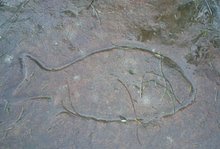Most sub-urban homes and public green spaces in Sydney consist of lawns. Petrol-powered equipment creates a noise nuisance (long abolished elsewhere) for most of the day. But apart from the internal combustion engines, the whippersnippers and leaf blowers it is the toxic lawn chemicals that are of serious concern.
Stan Cox reports about the situation in the U.S., but the scene in Australia is probably not much different:
"Profits from agricultural pesticides have been low for years," sending agrochemical manufacturers in search of new markets. Today, "their most reliable customers" are the makers of lawn-care products, who, in turn, are working to "increase the ranks of chemical-using lawn managers."
"…50 percent of households treat their lawns or gardens with pesticides, applying active ingredients at average annual rates of 2 pounds per acre for herbicides and 0.4 pounds for insecticides. Professional applicators apply an average 193 pounds of fertilizer per acre per year, while do-it-yourself homeowners use 139 pounds."
Beyond Pesticide quantifies the problem in the following way:
"Annually, over 100 million pounds of pesticides are used in and around homes and gardens. Alarmingly, suburban lawns and gardens receive far heavier pesticide applications per acre than most other land areas in the U.S., including agricultural areas."
The health effects of these cocktails on humans:
"Such widespread use and exposure is alarming considering that of 30 commonly used lawn pesticides, 13 are probable or possible carcinogens, 14 are linked with birth defects, 18 with reproductive effects, 20 with liver or kidney damage, 18 with neurotoxicity, and 28 are sensitizers and/or irritants." (See also their pdf for more details)
Why have a monoculture of lawns?
Cox cites a study that suggests that "property values are clearly associated with high-input green-lawn maintenance and use," and that "moreover, lawn-chemical users typically associated moral character and social responsibility with the condition of the lawn."
Apart form the 'tidy town' symptom it is also a stated part of Oz DIY culture and of course a good way to 'kill time.' The lawn care industry has an interest to substitute labour with petrol and chemicals to roll out that 'instant turf'.
What are the alternatives?
Cox cites that "Any truly sustainable alternative is, put simply, bad for business." For gardeners conversion to organic lawn management is desirable. No noise, petrol fumes & artificial toxic sustance dependence and dangers to health.
Better still would be to rip out the lawn and create a low water, low maintenance native garden. It will take some time, but you will be able to spend your time productively, lessen the environmental burden and encourage wildlife to your dwelling.
Links:
DB of common names of pesticides
NSW EPA, compulsory training info for people who work with pesticides.
Pesticide gardening info,UK, esp. the stuff most gardeners use.
Signs and Symptoms of pesticide poisoning
Effects of organophosphate poisoning
Using native grasses in your sustainable garden
Make an 'edible estate'
Picture: Defend your Turf!
Beyond Pesticide resources
Previous article in Mnly on the topic:
On petrol gardening
09 December 2005
Lawns and pesticides
Subscribe to:
Post Comments (Atom)











No comments:
Post a Comment